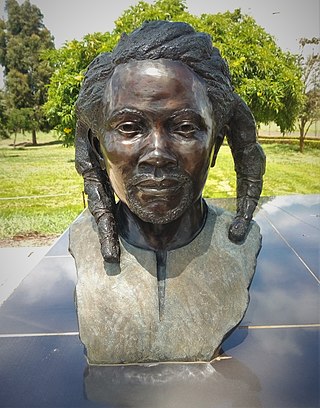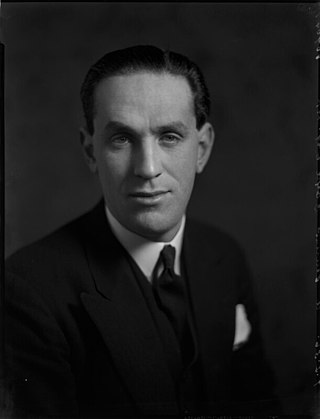Related Research Articles

The Kipsigis or Kipsigiis are a Nilotic group contingent of the Kalenjin ethnic group and speak a dialect of the Kalenjin language identified by their community eponym, Kipsigis. It is observed that the Kipsigis and another aboriginal group native to Kenya known as Ogiek have a merged identity. The Kipsigis are the biggest of the Kalenjin. The latest census population in Kenya put the Kipsigis at 1,972,000 speakers, accounting for 45% of all Kalenjin speaking people. They occupy the highlands of Kericho stretching from Timboroa to the Mara River in the south and the Mau Escarpment in the east to Kebeneti. They also occupy parts of Laikipia, Kitale, Nakuru, Narok, the Trans Mara District, Eldoret and the Nandi Hills.

The Dunblane massacre took place at Dunblane Primary School in Dunblane, near Stirling, Scotland, on 13 March 1996, when 43-year-old Thomas Hamilton shot dead 16 pupils and one teacher and injured 15 others before killing himself. It remains the deadliest mass shooting in British history.

The Mau Mau rebellion (1952–1960), also known as the Mau Mau uprising, Mau Mau revolt, or Kenya Emergency, was a war in the British Kenya Colony (1920–1963) between the Kenya Land and Freedom Army (KLFA), also known as the Mau Mau, and the British authorities. Dominated by Kikuyu, Meru and Embu fighters, the KLFA also comprised units of Kamba and Maasai who fought against the European colonists in Kenya, the British Army, and the local Kenya Regiment.

Kenya, officially the Republic of Kenya, is a country in East Africa. A member of the African Union with a population of more than 47.6 million in the 2019 census, Kenya is the 28th most populous country in the world and 7th most populous in Africa. Kenya's capital and largest city is Nairobi, while its oldest and second largest city, is the major port city of Mombasa, situated on Mombasa Island in the Indian Ocean and the surrounding mainland. Mombasa was the capital of the British East Africa Protectorate, which included most of what is now Kenya and southwestern Somalia, from 1889 to 1907. Other important cities include Kisumu and Nakuru. Kenya is bordered by South Sudan to the northwest, Ethiopia to the north, Somalia to the east, Uganda to the west, Tanzania to the south, and the Indian Ocean to the southeast. Kenya's geography, climate and population vary widely, ranging from cold snow-capped mountaintops with vast surrounding forests, wildlife and fertile agricultural regions to temperate climates in western and rift valley counties and further on to dry less fertile arid and semi-arid areas and absolute deserts.

Dedan Kimathi Waciuri was the senior military and spiritual leader of the Kikuyu rebels involved in the Mau Mau Uprising. Widely regarded as a revolutionary leader, he led the armed military struggle against the British colonial regime in Kenya in the 1950s until his capture in 1956 and execution in 1957. Kimathi is credited with leading efforts to create formal military structures within the Mau Mau, and convening a war council in 1953. He, along with Baimungi M'marete, Musa Mwariama, General China and Muthoni Kirima, was one of the Field Marshals.

Alan Tindal Lennox-Boyd, 1st Viscount Boyd of Merton, CH, PC, DL, was a British Conservative politician.
The 1959 Hola massacre was a massacre committed by British colonial forces during the Mau Mau Uprising at a colonial detention camp in Hola, Kenya.

Bomet is the capital and largest town of Bomet County, Kenya. Bomet town has a total population of 110,963. It is located along the B3 Mai Mahiu-Narok-Kisii road. Bomet city is one of the eight sister cities to Milwaukee.
The following lists events that happened during 2008 in Kenya.
The 10th Parliament of Kenya saw the National Assembly opened on 15 January 2008. This following the Orange Democratic Movement (ODM) of Raila Odinga winning a majority in the 2007 parliamentary elections. Raila was a candidate in the presidential elections, which resulted in a controversial victory for Mwai Kibaki of the Party of National Unity. The opening of the parliament was fraught with jeers, cheers and brawls between the opposing parties; Mwai Kibaki was greeted by the ODM members with silence and boos, while Raila was greeted by PNU members with accusations of genocide.
Lorna Chepkemoi Laboso was a Kenyan Politician born in Kericho District of the Orange Democratic Movement (ODM). She was briefly a Member of Parliament and an Assistant Minister in the Ministry of Home Affairs in the Vice President's Office in 2008.

The Colony and Protectorate of Kenya, commonly known as British Kenya or British East Africa, was part of the British Empire in Africa from 1920 until 1963. It was established when the former East Africa Protectorate was transformed into a British Crown colony in 1920. Technically, the "Colony of Kenya" referred to the interior lands, while a 16 km (10 mi) coastal strip, nominally on lease from the Sultan of Zanzibar, was the "Protectorate of Kenya", but the two were controlled as a single administrative unit. The colony came to an end in 1963 when an ethnic Kenyan majority government was elected for the first time and eventually declared independence.

British war crimes are acts committed by the armed forces of the United Kingdom that have violated the laws and customs of war since the Hague Conventions of 1899 and 1907, from the Boer War to the War in Afghanistan (2001–2021). Such acts have included the summary executions of prisoners of war and unarmed shipwreck survivors, the use of excessive force during the interrogation of POWs and enemy combatants, and the use of violence against civilian non-combatants and their property.
Sotik Constituency is an electoral constituency in Kenya established for the 1997 elections. It is one of five constituencies in Bomet County. Sotik has one major river, River Kipsonoi. Sotik is also a hilly place with the main crops being grown are tea and maize. The Nairobi Kisii highway passes through Sotik. Recently, many developments have occurred; Sotik Market was put up by the former governor Hon Isaac Ruto, since then infrastructure has been improving. Sotik is also a religious center with over 10 churches set up in the area, e.g., Bethel AGC, St Joseph's Sotik catholic church and Gustavo D' Kerich chapel.
The Lari massacre was an incident during the Mau Mau Uprising in which the Mau Mau massacred approximately 74 people, including some members of the loyalist Home Guard, but mostly their families: women, children and elderly relatives. Those murdered included prominent local loyalist Luka Kangara. A total of 309 rebels were prosecuted for the massacre, of which 136 were convicted. Seventy-one of those convicted were executed by hanging.
Operation Mushroom was the use of airpower by the Royal Air Force against the Mau Mau Movement during the Mau Mau Uprising in British Kenya from 1953 to 1956.
This is a timeline of the History of Kenya comprising important legal and territorial changes as well as political, social, and economic events in Kenya, read more at History of Kenya.
In June 1905, 1,850 ethnic Kipsigis men, women and children were killed in a punitive expedition dubbed Sotik expedition by the colonial British government forces led by Major Richard Pope-Hennessy. This was as a result of a raid by the Kipsigis on the Maasai which saw the Kipsigis part with Maasai cows, women and children to which the government demanded redress and return of the spoils of the raid but to which the Kipsigis returned in insults and turned down the warning. In effect, this led to alienation of tribal land to what would become part of Kenyan White Highlands.
Sotik town is an urban centre situated in Sotik Sub-county within Bomet County in the Western region of Kenya and managed by Sotik Town Council. Initially, it was the home of Mugenik Barngetuny Araap Sitonik, a prominent Kipsigis prophet of the late 19th century. Sotik is a metropolitan town with a majority of the residents from the Kipsigis ethnicity and a minority being from other ethnicities from Kenya including notably, Somalis and Indians. The town is home to Kalenjin music artist Philip Yegon, Kenyan athletes: Paul Kipsiele Koech and Mercy Cherono; and Kenyan politicians: Lorna Laboso and the late Joyce Cherono Laboso.
References
- ↑ "Sotik Expedition" (PDF). The London Gazette. 13 March 1908. pp. 1962–1963.
- ↑ "Mau Mau bands massacre 200". The Argus . Melbourne: National Library of Australia. 28 March 1953. p. 1.
- ↑ Anderson, David; Bennett, Huw; Branch, Daniel (2006). "A Very British Massacre". History Today. 56 (8): 20–22.
- ↑ "A date with death or the President: A tale of the Kisumu massacre | The Star". Archived from the original on 30 October 2012.
- ↑ p.10 Legal Impediments to Development in Northern Kenya, Ahmed Issack Archived 2012-10-23 at the Wayback Machine
- ↑ "Wagalla massacre: Raila Odinga orders Kenya probe". BBC News. 15 February 2011.
- ↑ Pupils appear for Kenyan school fire Archived 2004-11-07 at the Wayback Machine , Daily Dispatch (April 10, 2001)
- ↑ Kenya: School fire kills at least 59 students, World Socialist Web Site (March 30, 2001)
5. https://www.standardmedia.co.ke/education/article/2001382876/mp-wants-sotik-massacre-taught-in-all-british-schools 6. https://nation.africa/kenya/counties/bomet/british-mp-teach-sotik-massacre-in-uk-schools-1926276